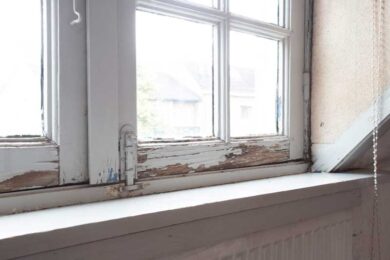Comprehensive Lead Paint Removal Service in NYC-- Certified and Licensed
Comprehensive Lead Paint Removal Service in NYC-- Certified and Licensed
Blog Article
Comprehensive Overview on Effective Lead Offense Elimination Strategies
In the world of environmental safety, resolving lead infractions demands a thorough and structured approach. This detailed guide starts by highlighting the important initial actions of determining lead hazards with advanced analysis and testing approaches. The guide specifies on the significance of sticking to strict safety and security procedures throughout the removal procedure, including the usage of proper PPE and separating affected locations.
Identifying Lead Dangers
Identifying lead risks is a vital initial step in minimizing the risks related to lead exposure. Lead, a harmful steel, can be present in various ecological mediums, including paint, dirt, water, and dirt. It postures severe health and wellness threats, particularly to youngsters and pregnant females, bring about neurological damage and developmental hold-ups. Specific identification of potential lead sources is necessary for efficient remediation.
The preliminary phase in determining lead hazards involves understanding typical lead resources within the constructed setting. Frameworks constructed prior to 1978 are specifically at risk as a result of the widespread use lead-based paint throughout that duration. Furthermore, dirt contamination can happen from degrading outside paint, commercial discharges, or historic use of leaded gasoline.
Another significant resource is lead piping and pipes fixtures, which can leach introduce alcohol consumption water. Customer products such as toys, ceramics, and imported items might likewise include harmful lead levels. Especially, work environments and hobbies entailing lead can track impurities into homes.
Evaluation and Testing
When resolving lead risks, reliable evaluation and screening are vital. Initial evaluation typically includes an aesthetic evaluation to recognize potential lead resources, such as deteriorating paint or contaminated dust.

Dust wipe sampling is an additional crucial technique, specifically in residential settings. By collecting samples from floorings, windowsills, and various other surfaces, this approach offers understandings right into prospective exposure threats. Dirt screening around structure borders is important to discover lead contamination that might position risks, specifically to youngsters.
Safe Elimination Treatments
Upon finishing thorough assessment and screening, implementing safe elimination treatments is the following important phase in resolving lead threats. This process makes certain that lead-contaminated products are successfully and securely gotten rid of, decreasing threat to both employees and locals. The very first step involves separating the afflicted area using plastic bed linen and correct sealing techniques to avoid the spread of lead dirt.
Employees should don ideal individual safety equipment (PPE), consisting of respirators, handwear covers, and disposable coveralls, to mitigate direct exposure. Utilizing specialized tools and damp techniques, such as wet fining sand or using HEPA-filtered vacuum cleaners, minimizes the website link dispersion of lead fragments. It is vital to prevent completely dry fining sand or abrasive blowing up, as these approaches can create dangerous lead dust.
Garbage disposal is one more vital element; all contaminated products should be firmly nabbed and classified according to EPA and regional laws. Furthermore, thorough cleansing of the workplace with HEPA vacuum cleaners and wet cleaning guarantees the elimination of residual lead bits.
Post-Removal Confirmation

Confirmation of effective lead removal, referred to as post-removal confirmation, is crucial to ensure the security and habitability of the remediated location. This procedure involves a series of thorough assessments and tests created to detect any type of recurring lead fragments that might pose health and wellness threats. The first step usually consists of an aesthetic inspection to about his evaluate the completion and high quality of the removal job. This inspection guarantees that all recognized resources of lead have actually been resolved which no noticeable signs of contamination remain.
Following the aesthetic examination, ecological tasting is carried out. This includes gathering dust, soil, and sometimes water examples from the remediated location. Approved research laboratories examine these samples to measure lead levels, guaranteeing they drop below the safety thresholds developed by governing bodies such as the Epa (EPA)
In addition, air quality screening might be carried out to spot airborne lead fragments, particularly in cases where extensive lead-based paint elimination or remodelling has actually occurred. The outcomes of these tests give quantitative data verifying that the lead degrees are within allowable best site limits.
Inevitably, post-removal confirmation functions as an important checkpoint, validating the efficiency of the lead abatement initiatives and securing the health of owners and visitors.
Safety Nets and Maintenance

A key safety net consists of making use of lead-safe accredited service providers for any type of improvement, repair work, or paint activities. These experts are learnt methods that decrease lead dust and debris. In addition, maintaining colored surface areas to avoid breaking or peeling off is important, as wearing away paint can release lead bits right into the setting.
Educational initiatives targeting homeowner and renters pertaining to the dangers of lead and the significance of reporting any type of possible hazards can even more improve preventative initiatives. Regular cleaning using HEPA vacuums and wet wiping strategies can significantly reduce lead dust build-up.
Final Thought
In summary, effective lead violation removal requires a thorough approach encompassing detailed assessment, exact screening, and strict elimination treatments. Recurring examinations and maintenance are essential to mitigate future lead hazards, thereby guarding public health and wellness and ensuring continual conformity with regulative needs.
Report this page